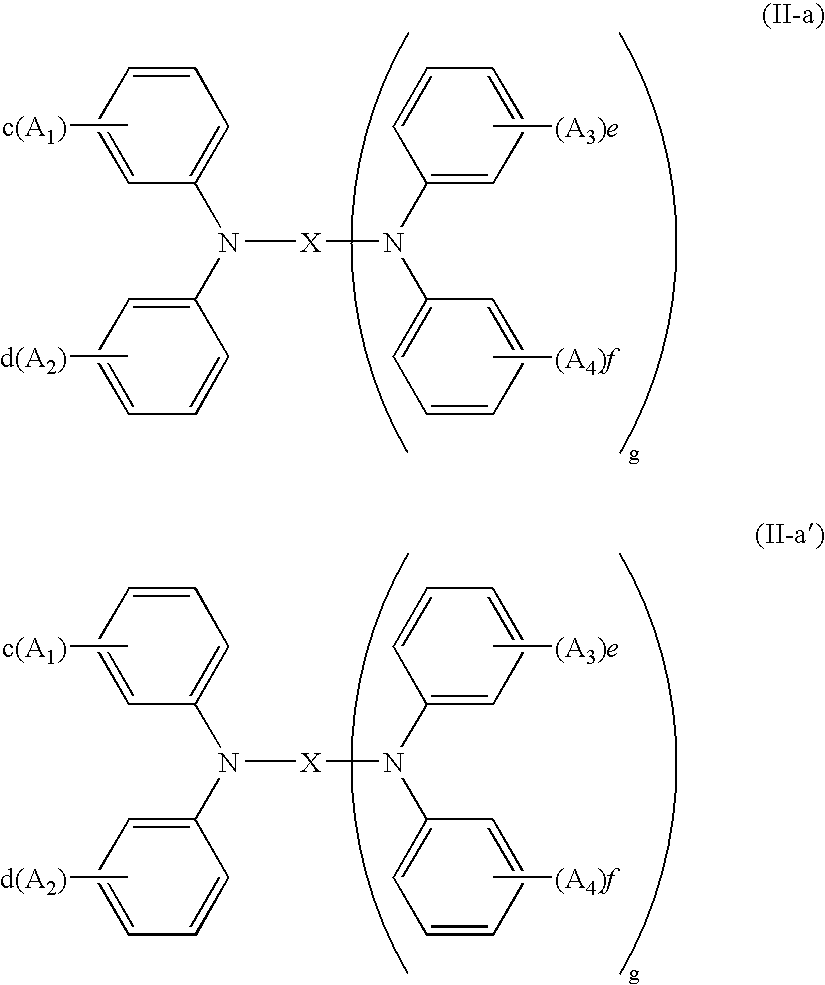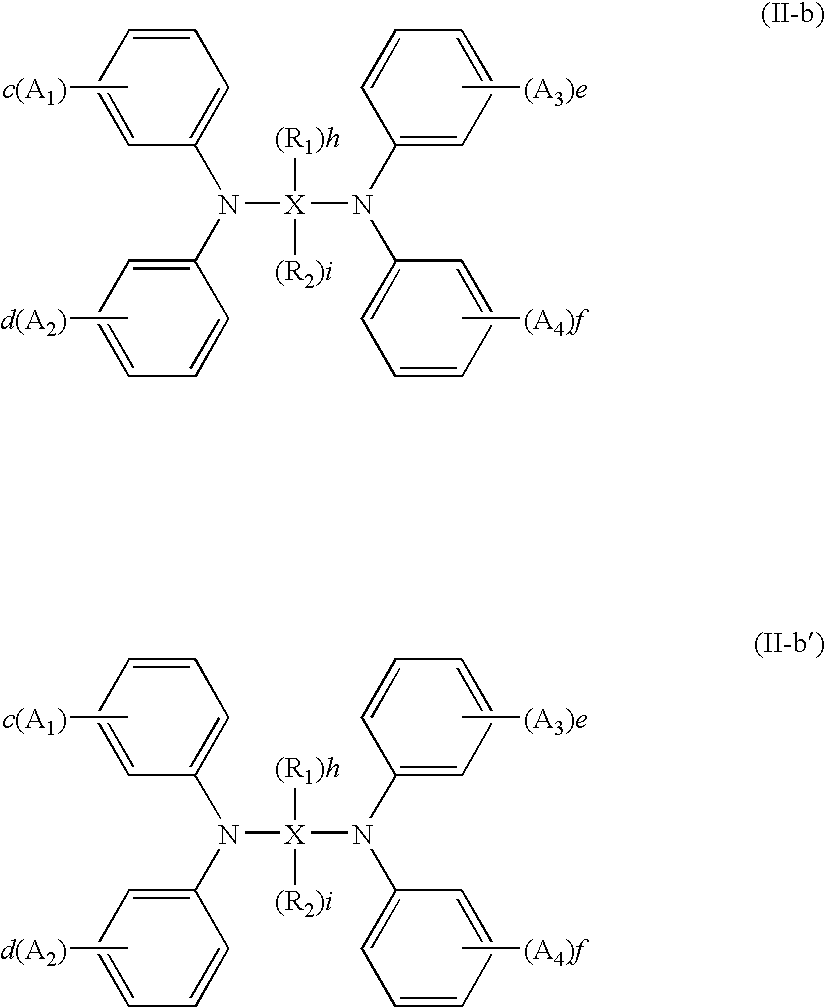Organic Electroluminescent Device
an electroluminescent device and organic technology, applied in the field of organic electroluminescent, can solve the problems of insufficient current efficiency and lifetime of materials, device exhibiting long lifetime and high current efficiency, and low heat resistance of organic el devices employing these materials, and achieve excellent heat resistance, long lifetime, and high current efficiency
- Summary
- Abstract
- Description
- Claims
- Application Information
AI Technical Summary
Benefits of technology
Problems solved by technology
Method used
Image
Examples
example 1
[0087] On a glass substrate of 25 mm×75 mm×1.1 mm thickness, a transparent electrode of an indium tin oxide film having a film thickness of 120 nm was allocated. The above glass substrate was cleaned by application of ultrasonic wave in isopropyl alcohol for 5 minutes and then by exposure to ozone generated by ultraviolet light for 30 minutes. Subsequently, the substrate was set to a vacuum vapor deposition apparatus.
[0088] As a hole injecting layer, N′,N″-bis[4-(diphenylamino)phenyl]-N′,N″-diphenylbiphenyl-4,4′-diamine was deposited on the substrate, thereby forming a film having a film thickness of 60 nm, and then as a hole transporting layer, N,N′-bis[4′-{N-(naphthyl-1-yl)-N-phenyl}aminobiphenyl-4-yl]-N-phenylamine was deposited thereby forming a film having a thickness of 20 nm. Subsequently, as a light emitting layer, the above compounds (B)-7 and (A)-9 at the ratio by weight of 40:3 were deposited at the same time thereby forming a film having a film thickness of 40 nm.
[0089...
example 2
[0091] An organic device was fabricated similarly as Example 1 except that the compound (A)-1 in place of the compound (A)-9 was used to form a light emitting layer.
[0092] The obtained device was tested under an electricity application, a green light emission with an emission luminance of 950 cd / m2 was observed at a voltage of 6.5 V and a current density of 10 mA / cm2. In addition, when the device was continuously tested under an electricity application at an initial luminance of 5,000 cd / m2, the half lifetime was found to be 1,750 hours. Further, the device was tested under an electricity application after holding in storage at 85° C. for 1,000 hours, and no change of the emission luminance thereof was found.
example 3
[0093] An organic device was fabricated similarly as Example 1 except that the compound (A)-20 in place of the compound (A)-9 was used to form a light emitting layer.
[0094] The device was tested under an electricity application, a green light emission with an emission luminance of 2400 cd / m2 was observed at a voltage of 6.5 V and a current density of 10 mA / cm2. In addition, when the device was continuously tested under an electricity application at an initial luminance of 5,000 cd / m2, the half lifetime was found to be 2,500 hours. Further, the device was tested under an electricity application after holding in storage at 85° C. for 1,000 hours, and no change of the emission luminance thereof was found.
PUM
| Property | Measurement | Unit |
|---|---|---|
| Weight | aaaaa | aaaaa |
| Ratio | aaaaa | aaaaa |
| Current | aaaaa | aaaaa |
Abstract
Description
Claims
Application Information
 Login to View More
Login to View More - R&D
- Intellectual Property
- Life Sciences
- Materials
- Tech Scout
- Unparalleled Data Quality
- Higher Quality Content
- 60% Fewer Hallucinations
Browse by: Latest US Patents, China's latest patents, Technical Efficacy Thesaurus, Application Domain, Technology Topic, Popular Technical Reports.
© 2025 PatSnap. All rights reserved.Legal|Privacy policy|Modern Slavery Act Transparency Statement|Sitemap|About US| Contact US: help@patsnap.com



